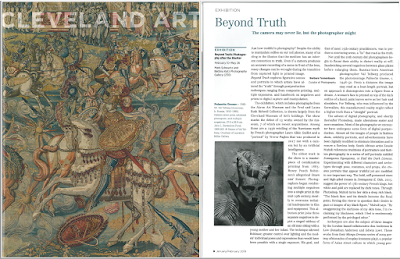February 12, 2024
PARIS.- This exhibition brings together two photographic collections – the public collection of the Musée national d’art moderne and the private one of collector Marin Karmitz – offering an unprecedented look at representations of the human figure in the 20th and 21st centuries.
Featuring over 500 photos and documents by some 120 historic and contemporary photographers, the exhibition goes beyond the traditional categories of study, such as portrait, self-portrait, nude and even humanist photography. It reveals particularities, photographic ways of seeing, and shows the correspondence between artists. We discover the obsessions they share, whether in the way they approach the subject or their stylistic approach.These connections can shed light on certain practices found at a specific moment in time, or, on the other hand, show similar perspectives that occurred at completely different periods. The images on display also stimulate questions around the photographer’s responsibility : how does photography participate in the birth of identities and their visibility? How does it tell the story of individuality and the relationship to the other?
The collections of Centre Pompidou and Marin Karmitz are different in nature, origin and purpose, but appear complementary here. The public and private gaze enter into conversation and tell new stories. Together, they spark reflection around the very concept of an art collection. How is a collection built, and what is the role of subjectivity in its construction? How can we transmit it to the public?
In the space of almost fifty years, Centre Pompidou photography collection has become one of the most important in the world. Featuring nearly 40,000 prints and 60,000 negatives, it includes major historic pioneers (Man Ray, Brassaï, Constantin Brancusi, Dora Maar) and many sets of photos from key 20th-century figures, representing significant corpora of contemporary art. Marin Karmitz studied cinema and photography in the post-war years and is a major figure in French cinema. For many decades, he has fed his fascination for art in all its forms. His photograph collection reveals an unshakeable interest in representations of the world and its inhabitants, from major avant-garde figures like Stanislaw Ignacy Witkiewicz (with Marin Karmitz recently donating a significant selection of this artist’s works to the Centre Pompidou) to modern figures like artist SMITH.
Photographers exhibited (not exhaustive) : Berenice Abbott, Laia Abril, Michael Ackerman, Laure Albin-Guillot, Dieter Appelt, Richard Avedon, Alain Baczynsky, Hans Bellmer, Jacques- André Boiffard, Christian Boltanski, Agnès Bonnot, Constantin Brancusi, Bill Brandt, Brassaï, Johannes Brus, Gilles Caron, Henri Cartier-Bresson, Mark Cohen, Joan Colom, Antoine d’Agata, Roy DeCarava, Raymond Depardon, Pierre Dubreuil, Hans Eijkelboom, Walker Evans, Patrick Faigenbaum, Louis Faurer, Fernell Franco, Robert Frank, Douglas Gordon, Sid Grossmann, Raoul Hausmann, Dave Heath, Michal Heiman, Lewis Hine, Lukas Hoffmann, Françoise Janicot, Michel Journiac, Valérie Jouve, Birgit Jürgenssen, James Karales, Chris Killip, William Klein, Josef, Koudelka, Tarrah Krajnak, Hiroji Kubota, Dorothea Lange, Sergio Larrain, Saul Leiter, Helmar Lerski, Leon Levinstein, Helen Levitt, Eli Lotar, Dora Maar, Vivian Maier, Man Ray, Chris Marker, Daniel Masclet, Susan Meiselas, Annette Messager, Lisette Model, Zanele Muholi, Joshua Neustein, Janine Niépce, J.D. 'Okhai Ojeikere, Homer Page, Trevor Paglen, Helga Paris, Gordon Parks, Mathieu Pernot, Anders Petersen, Friederike Pezold, Bernard Plossu, Barbara Probst, Gerhard Richter, Alix Cléo Roubaud, Albert Rudomine, Ilse Salberg, Lise Sarfati, Gotthard Schuh, Claude Simon, Lorna Simpson, SMITH, W. Eugene Smith, Stéphanie Solinas, Annegret Soltau, Jo Spence, Louis Stettner, Paul Strand , Christer Strömholm, Josef Sudek, Val Telberg, Shōmei Tōmatsu, Jakob Tuggener, Ulay, Johan van der Keuken, Leonora Vicuña, Roman Vishniac, Andy Warhol, Hitomi Watanabe, Weegee, William Wegman, Koen Wessing, Nancy Wilson-Pajic, Stanisław Ignacy Witkiewicz…
Addenda
Telberg works at the Pompidou (source: https://www.centrepompidou.fr/)
Val Telberg(1910, Russie - 1995, États-Unis)
Nationalité russe
Birth: 1910, Russie
Death: 1995, États-Unis
© droits réservés
1.
Selfportrait in Paris
Domain: Photo
Techniques: Epreuve gélatino-argentique
Dimensions: 27,9 x 20,3 cm
Acquisition: Don des Amis du Centre Pompidou, Groupe d'Acquisition pour la Photographie, 2022.
Inventory no. AM 2022-707
Val Telberg, Val Telberg and Kathleen, avant 1950
On display: Gallery 2, level 6
2.
Rebellion Call
circa 1953
Domain: Photo
Techniques: Epreuve gélatino-argentique
Dimensions: 23 x 27,5 cm
Acquisition: Don des Amis du Centre Pompidou, Groupe d'Acquisition pour la Photographie, 2022.
Inventory no. AM 2022-705
On display: Gallery 2, level 6
3.
Cataclysm
circa 1950
Domain: Photo
Techniques: Epreuve gélatino-argentique
Dimensions: 22,5 x 27,5 cm
Acquisition: Don des Amis du Centre Pompidou, Groupe d'Acquisition pour la Photographie, 2022.
Inventory no. AM 2022-704
On display: Gallery 2, level 6
4.
Val Telberg and Kathleen
avant 1950
Domain: Photo
Techniques: Epreuve gélatino-argentique
Dimensions: 27,9 x 20,3 cm
Acquisition: Don des Amis du Centre Pompidou, Groupe d'Acquisition pour la Photographie, 2022.
Inventory no. AM 2022-707
On display: Gallery 2, level 6


.jpg)
.jpg)
.jpg)
.jpg)
.jpg)
.jpg)
.jpg)
.jpg)
.jpg)
.jpg)













